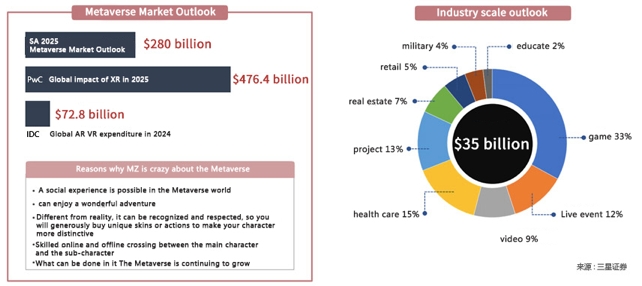Metaverse Market Analysis
The expansion of the Metaverse industry has been predicted by various market research. According to the forecast of global market research company Strategy Analytics, the Metaverse market is expected to reach $280 billion (about 315 trillion won) by 2025. The VR sector is expected to reach 1.99 trillion U.S. dollars by 2030, according to analysts of securities traders.
Major technology companies have consistently defined Metaverse as new opportunities for the future, developing and launching platforms and products. As of January 2021, Microsoft (MS) recently acquired JeniMax Media, launching the Virtual Reality-related device "Holo Lens 2". NVIDIA has launched Omniverse, a collaboration platform where people can collaborate in a virtual office. Facebook also released virtual space social communities "Facebook Space" and "Horizon". In South Korea, Naver recently launched the "ZEPETO" platform, which can use facial recognition and augmented reality to build virtual Avatar, virtual worlds, etc., where projects such as living and creating clothing can be traded.
Roblox, one of the most representative Metaverse platforms, is a virtual world-themed gaming platform。 Roblox is a LEGO shaped individual Avatar to enjoy the game. Users can not only chat or talk, but also make games directly. As of the end of last year, ROBLOX had 32.6 million daily active users, and 50 million games were generated within ROBLOX alone, making it a huge hit among students and children under the age of 16 in the United States. One of the main reasons to focus on the Metaverse is that Gen Z is used to digital machines and virtual world activities. This fact is well demonstrated by the prime age group of Metaverse games. ZEPETO (200 million cumulative users) has 80% of users in their 10s. In the U.S., 55% of teenagers under 16 have joined Roblox.
Ultimately, the Metaverse market is likely to snowball over time. Strategy Analytics (SA) predicts that by 2025, the Metaverse market size will reach $280 billion, more than 6 times that of today. PwC predicts that by 2025, the global spillover effects of XR will reach 520 trillion won ($476.4 billion).
Last updated
